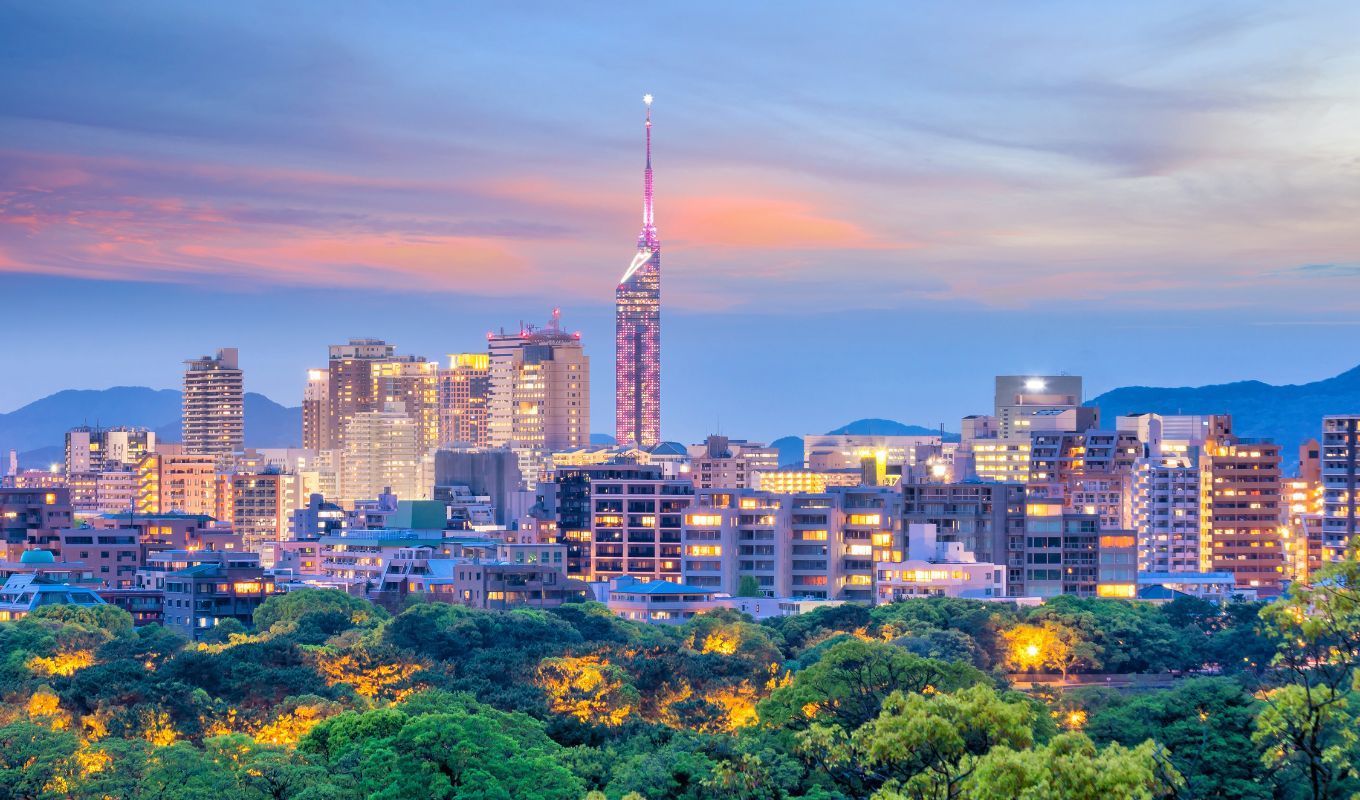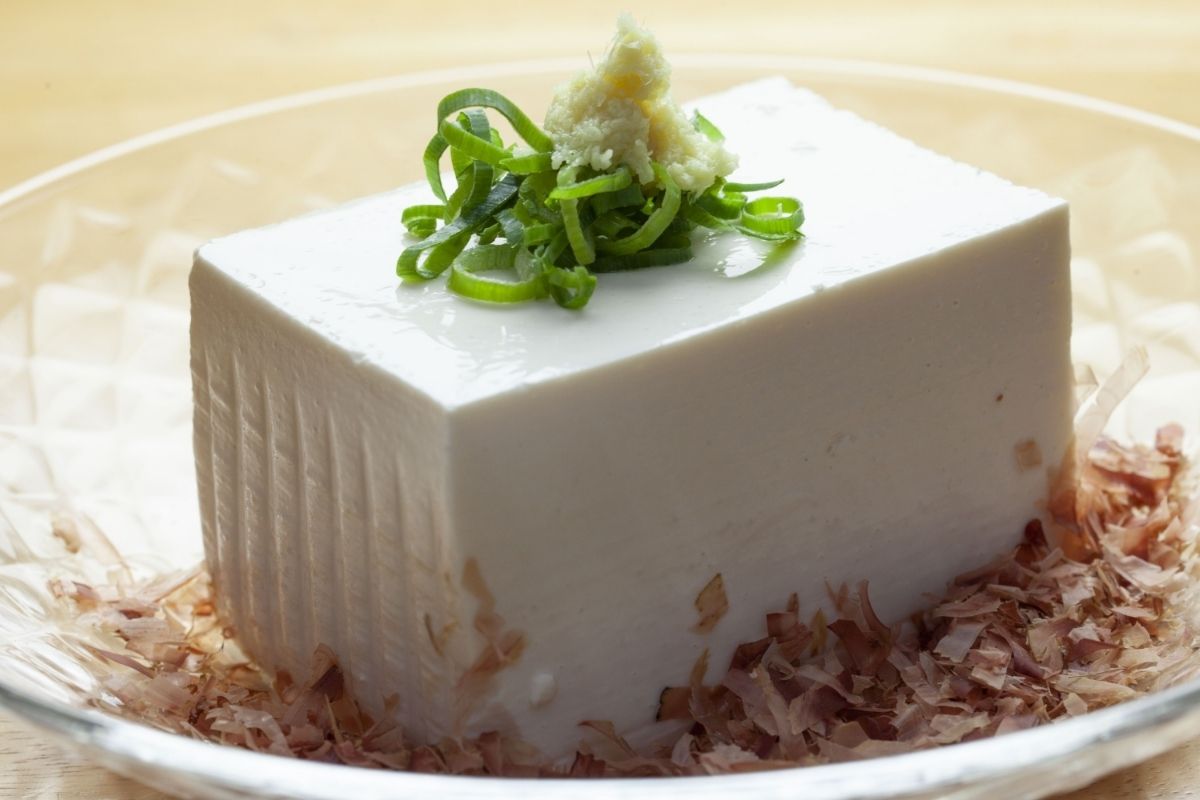Located in the northern part of Kyushu, Hakata has long flourished as a port city and harbor city with active trade on Hakata Bay. Around Hakata Station, where the Shinkansen bullet train passes through, you will find Ohori Park, a nature-rich strolling spot, Bayside Place Hakata with its symbolic Hakata Port Tower, and Nakasu, famous for its food stalls, all of which are standard tourist attractions that you must not miss when visiting Hakata.
There are also many family-friendly tourist spots such as the Fukuoka Zoo and Botanical Garden, Fukuoka Tower, and even a science museum.
But perhaps Fukuoka is best known in Japan for its amazing food scene. Hakata’s local delicacies are too numerous to mention and include such famous delicacies as motsunabe, mizutaki, Hakata ramen, and the fabulously named one-bite ichiguchi-gyoza.
Yatai
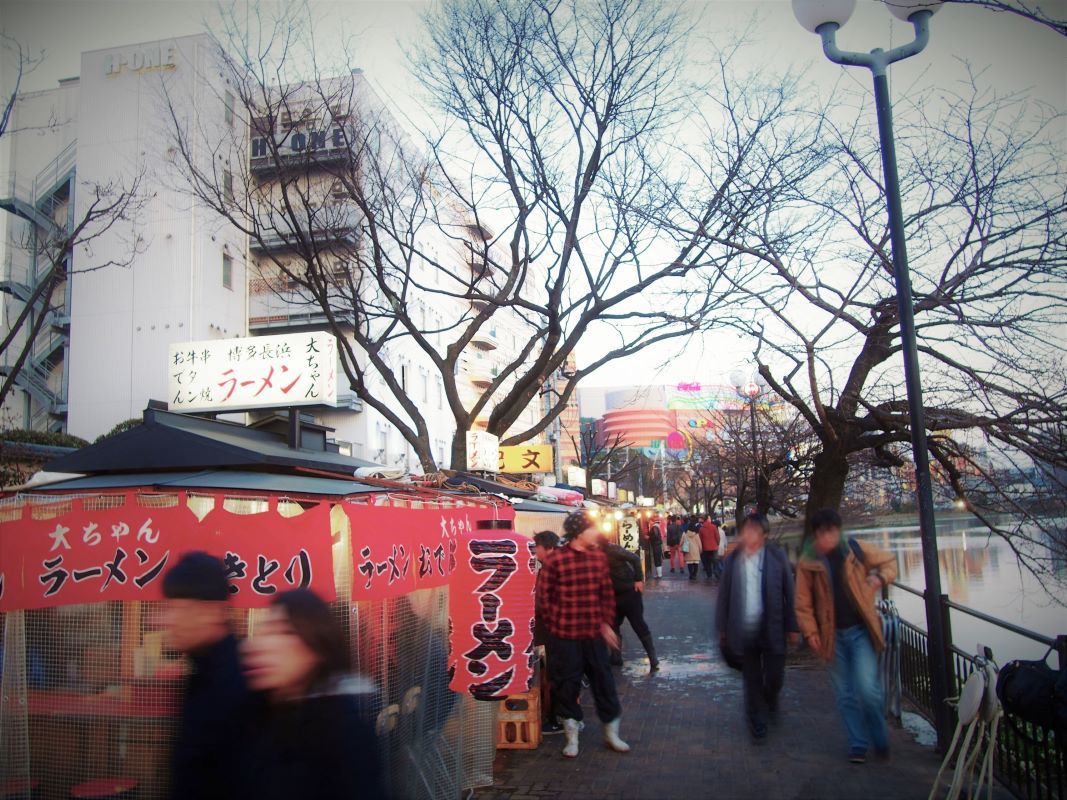
Nakasu Yatai is located almost in the center of Nishitetsu Fukuoka (Tenjin) Station and Hakata Station. The main areas of Nakasu yatai are inside Seiryu Park and along Naka River.
In particular, the yatai area concentrated along Naka River is a popular spot visited by many tourists.
The lights of the yatai reflected on the water and the gorgeous scenery of Hakata’s entertainment district give a vibrant yet tranquil feeling to the must-visit area.
Fukuoka Tower
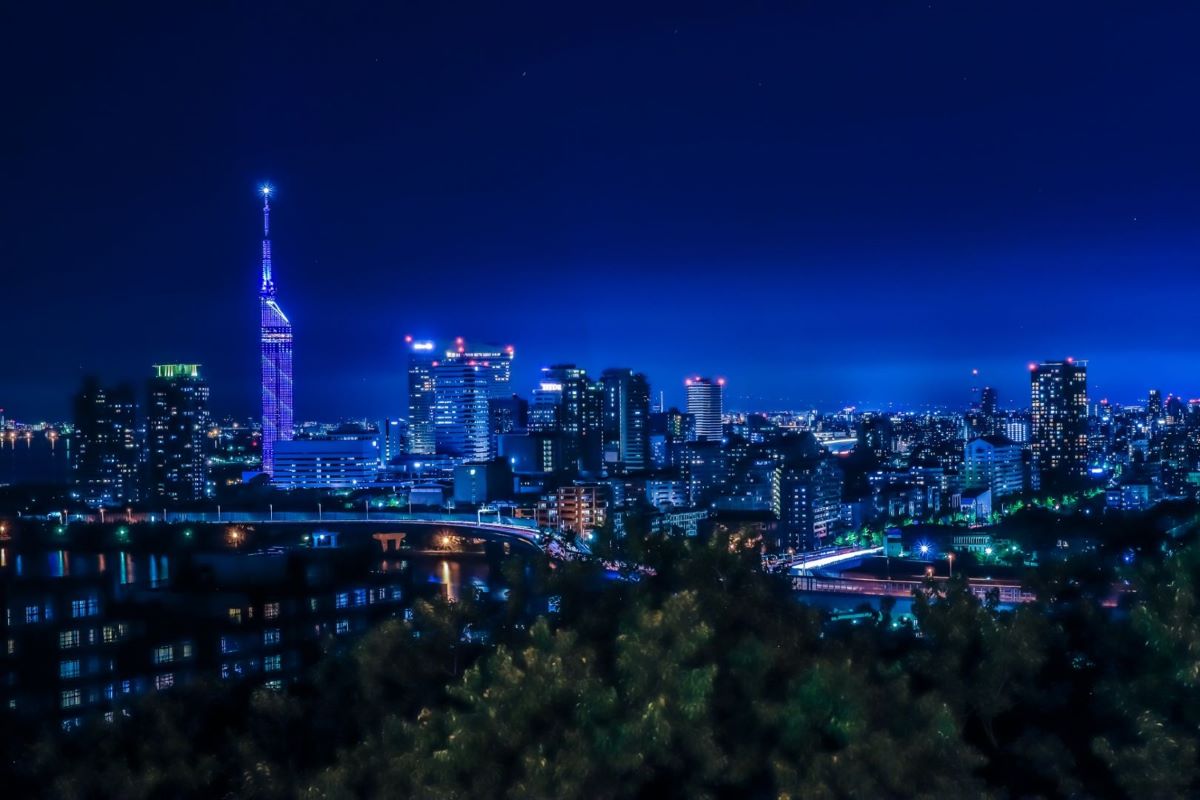
Fukuoka Tower is located in the Seaside Momochi district. It is famous as a landmark of Fukuoka.
At 234 meters high, it is the tallest seaside tower in Japan, offering a 360-degree panoramic view of central Fukuoka and Hakata Bay from the observation deck on the top floor, 123 meters above the ground.
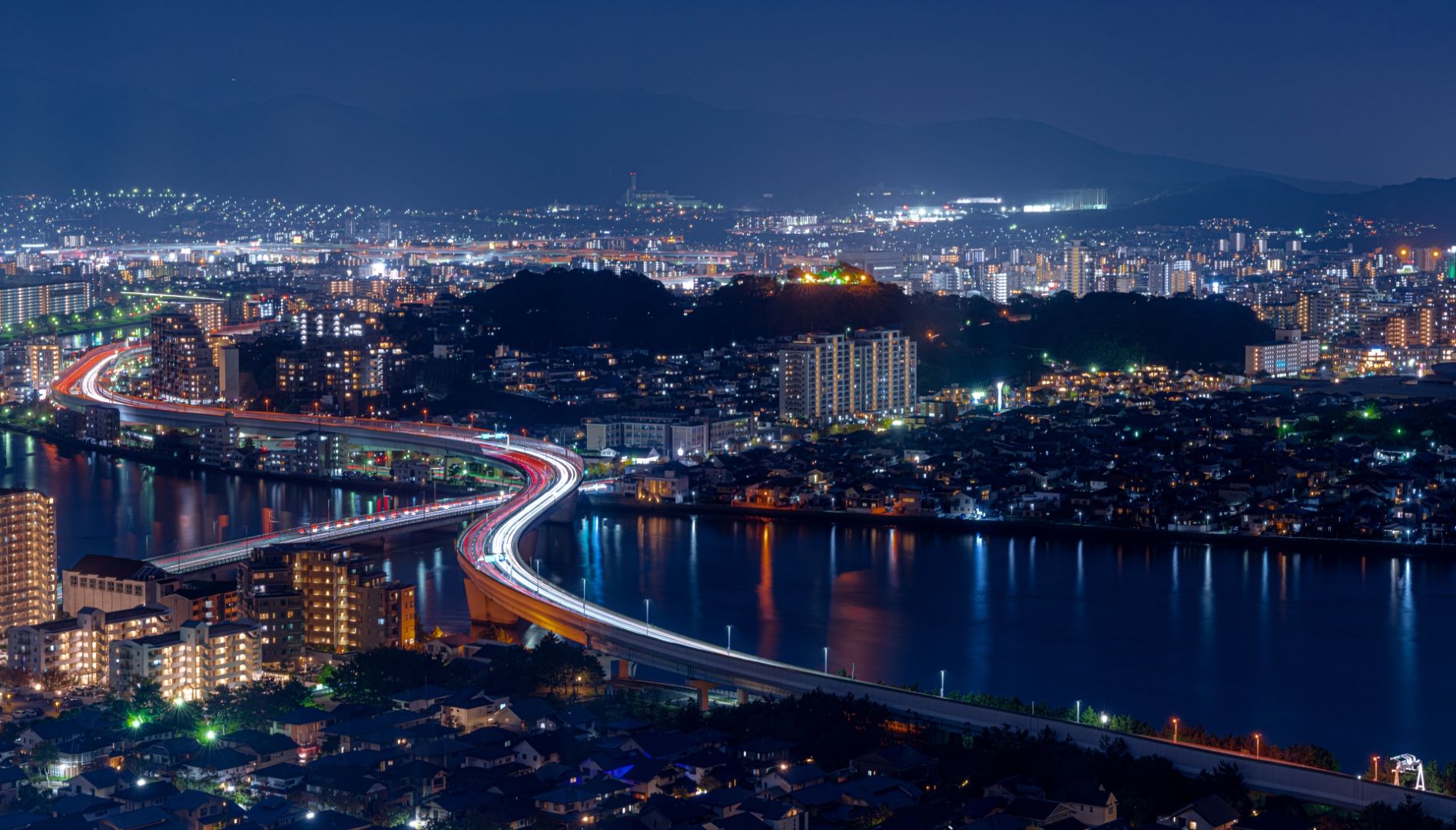
Visitors can enjoy the open view during the day and the night view at night.
JR Hakata City
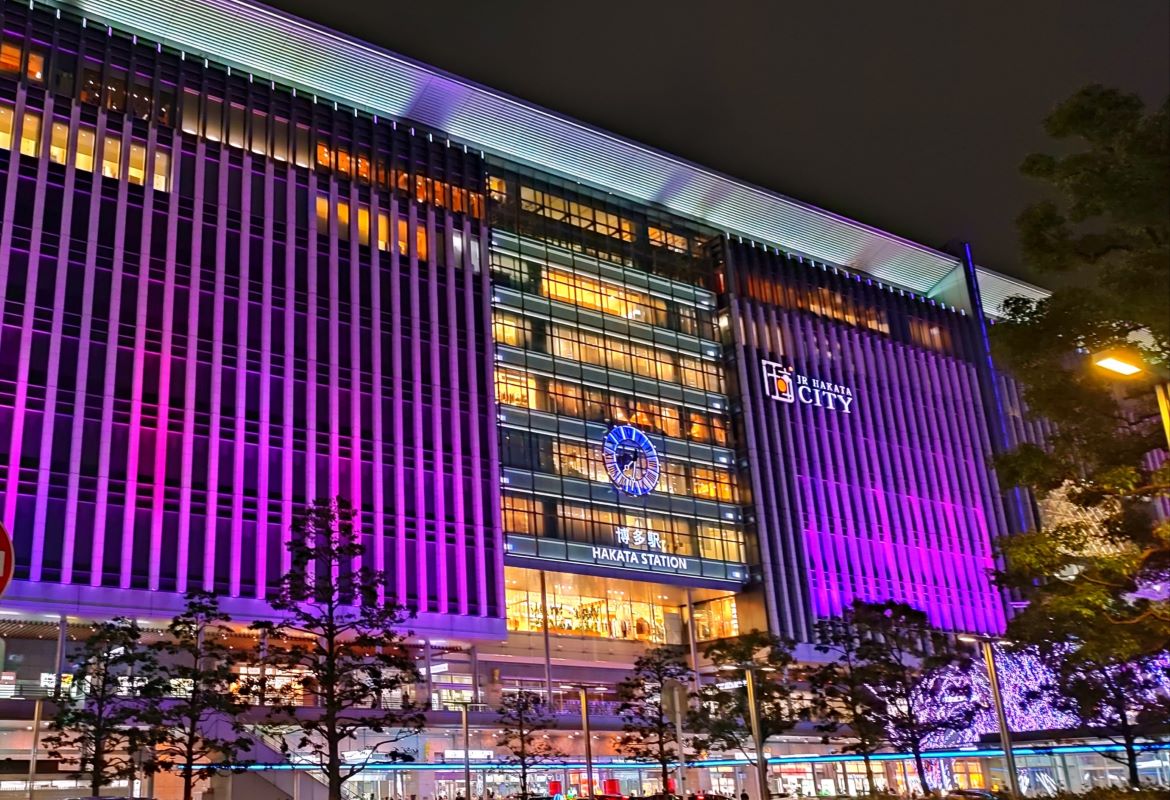
Hakata City is one of the largest station buildings in Japan, located at the Hakata Exit of Hakata Station. In addition to a wide variety of stores featuring the latest brands, the rooftop observation deck offers a panoramic view of the nearby Hakata Ward.
The restaurant floor, where many of Kyushu’s best restaurants are gathered, is also an attraction that can be considered the gateway to a trip to Fukuoka.
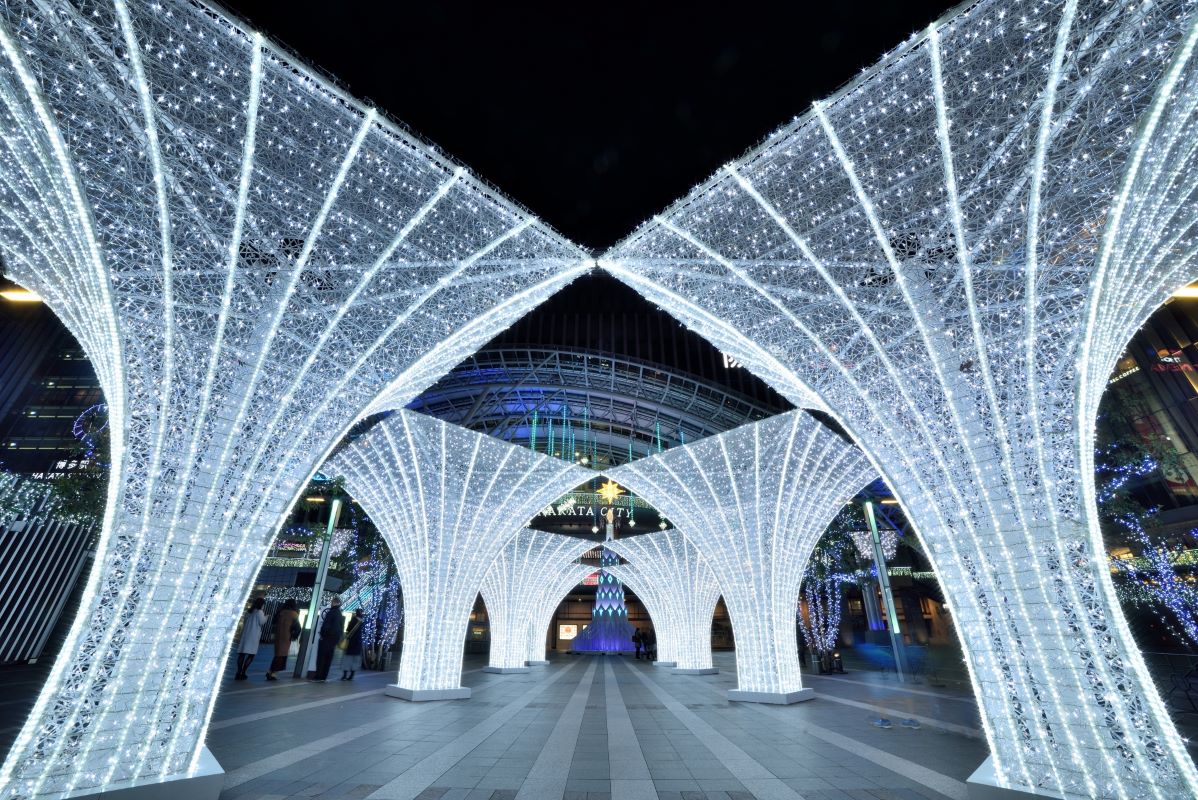
Pro Tip: If you will be in Fukuoka during the winter months check out the dazzling illumination display at the front of the building
Uminonakamichi Seaside Park

Uminonakamichi Seaside Park, a 5-minute walk from JR Uminonakamichi Station, is a national park with an attractive open location with the ocean on both sides of the road.
With a total area of approximately 300 hectares, the park is a great spot for hiking and picnicking, with beautiful flowers blooming throughout the year.
The park is especially famous for its 1.5 million “nemophila” flowers, which turn the entire area a pale blue color. The best time to see them is from mid-April to late April.

At the “Animal Forest,” which is recommended for families, visitors can see flamingos, peacocks, squirrel monkeys, etc., feed the animals, and touch guinea pigs.
The park is too big to visit in a day, so you can rent a bicycle and feel the sea breeze while touring.
Note: If you are an aquarium fan, then you can visit Marine World Uminonakamichi while you in the area.
Ohori Park

Created from the outer moat of Fukuoka Castle, Ohori Park is a water park centered around a pond with a circumference of approximately 2 km.
Many people enjoy jogging and walking. Boats are available for rent except in winter.
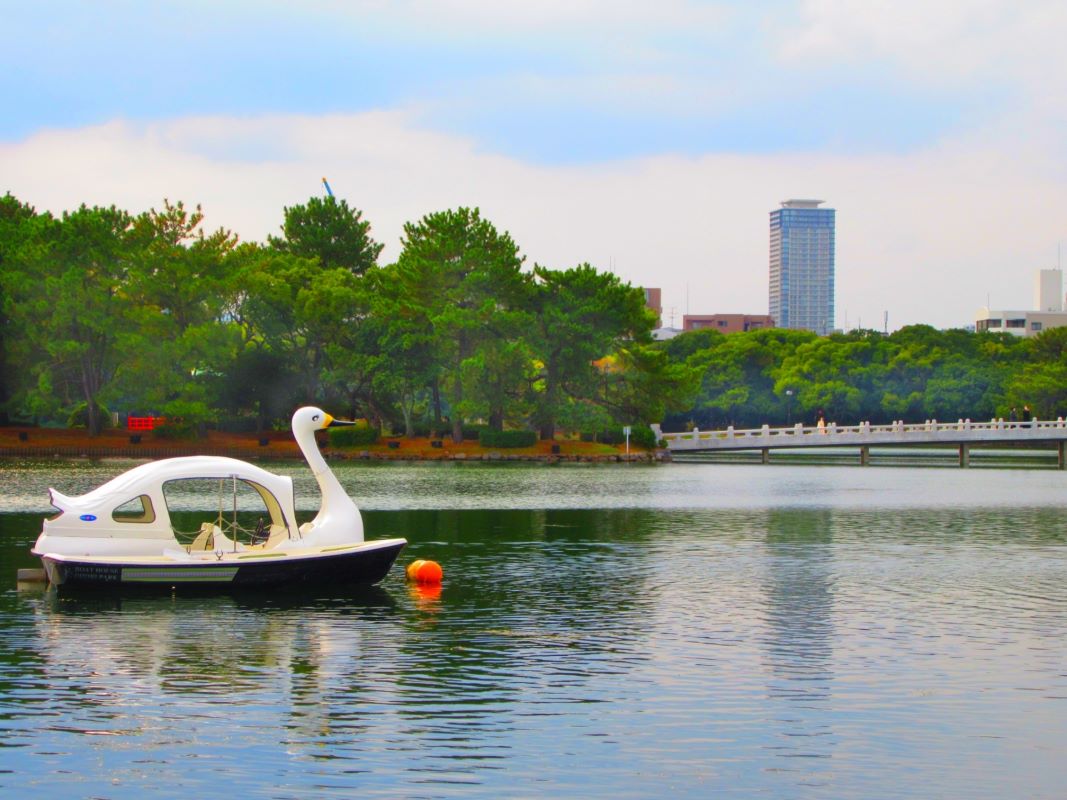
There are also boats for rent, so you can enjoy rowing a boat. Visitors can also enjoy seasonal flowers such as tulips and azaleas in spring and sunflowers in summer.
The beautiful Ohori Park Japanese Garden on the far side of the lake is small but amazing.
Access: 7 min. walk from Subway “Ohori Koen Stn.
Fukuoka Castle Ruins

Known as the residence of the Kuroda clan of the Fukuoka domain during the Edo period, the castle is the largest in Kyushu.
Today, the castle ruins are maintained as Maizuru Park and Ohori Park, which are popular strolling spots for cherry blossoms in spring and autumn leaves in fall.
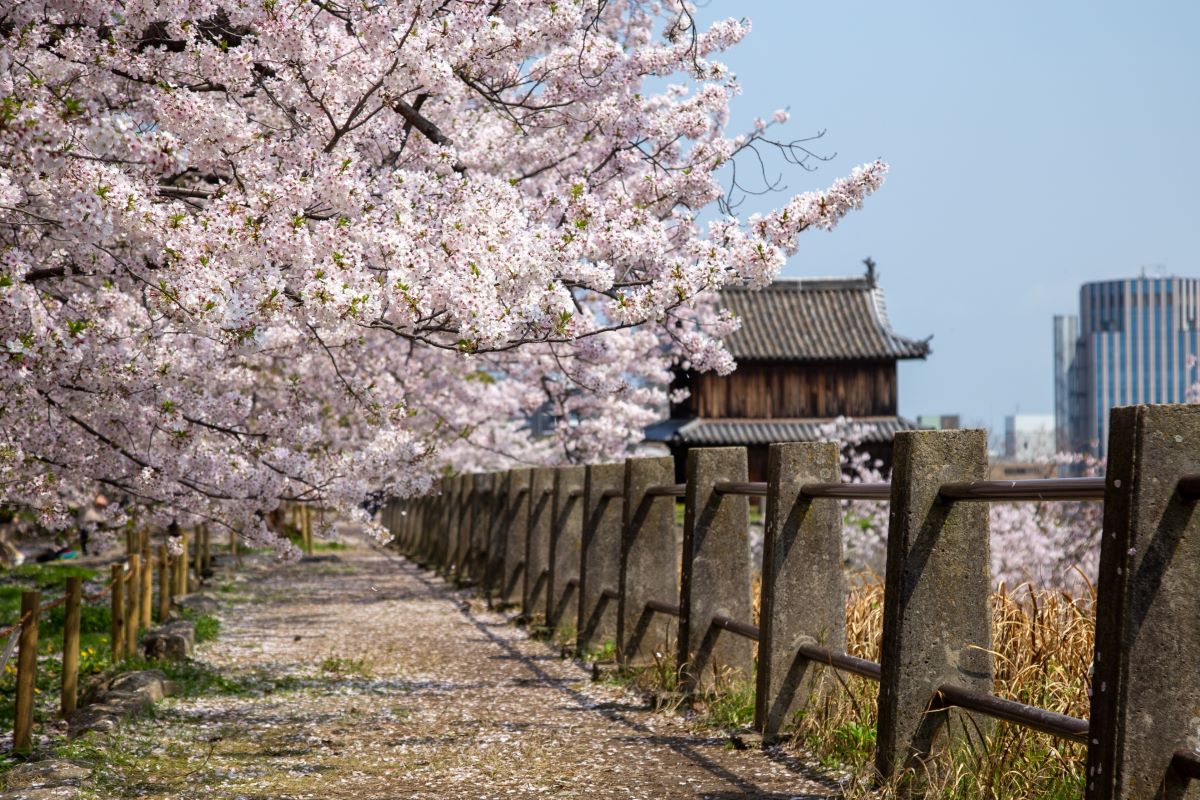
In addition to the Tamon Yagura, the remains of other structures such as the prayer tower and Najima-mon Gate also remain, allowing visitors to feel the history of the castle.
Nagahama
Nagahama Wholesale Market Fresh Fish Market is a great place to visit if you love seafood.
This fresh fish wholesale market gathers seafood supplied to the Fukuoka metropolitan area and other parts of Japan.
Recommended season
Yanagibashi Renga Market

The Yanagibashi Rengo Market, which is the kitchen of the community, is a good place to visit for those who want to experience the deep charm of Hakata.
The market’s narrow alleyways are packed with stores, and you can feel the atmosphere of a good old-fashioned, bustling Japanese market, which is not so common these days.
One-third of the approximately 70 stores are fresh fish stores or salted and dried fish stores.
Address: 1-5 Haruyoshi, Chuo-ku, Fukuoka shi, Fukuoka Prefecture, 810-0003
Access:About 3 minutes walk from Watanabe-dori Station on the Subway Nanakuma Line
Kushida Shrine
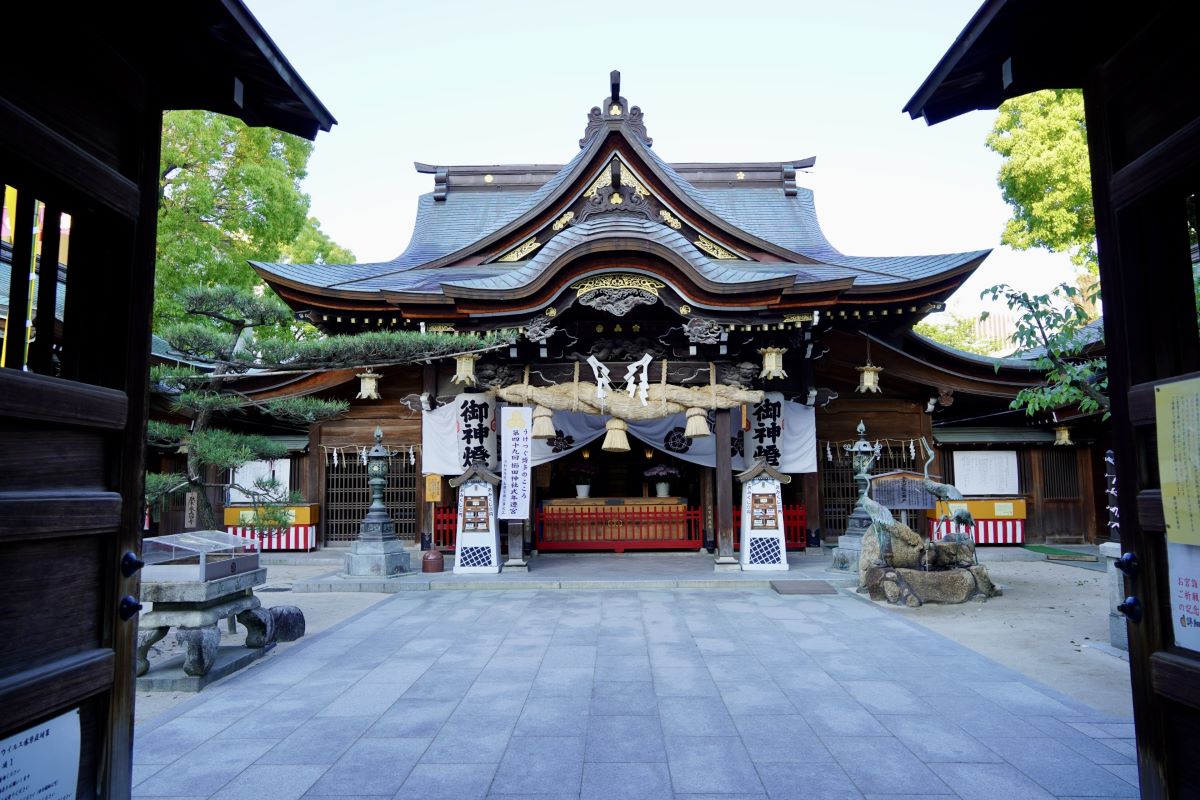
Visiting the Kushida Shrine is a popular thing to do in Fukuoka. The Shrine has long been worshipped as the chief deity of Hakata, and is affectionately called “Ogushida-san” by the locals.
Festivals such as Hakata Gion Yamakasa and Hakata Okunchi attract many tourists every year, and a permanent display of decorative Yamakasa of Hakata Gion Yamakasa can be seen on the shrine grounds.
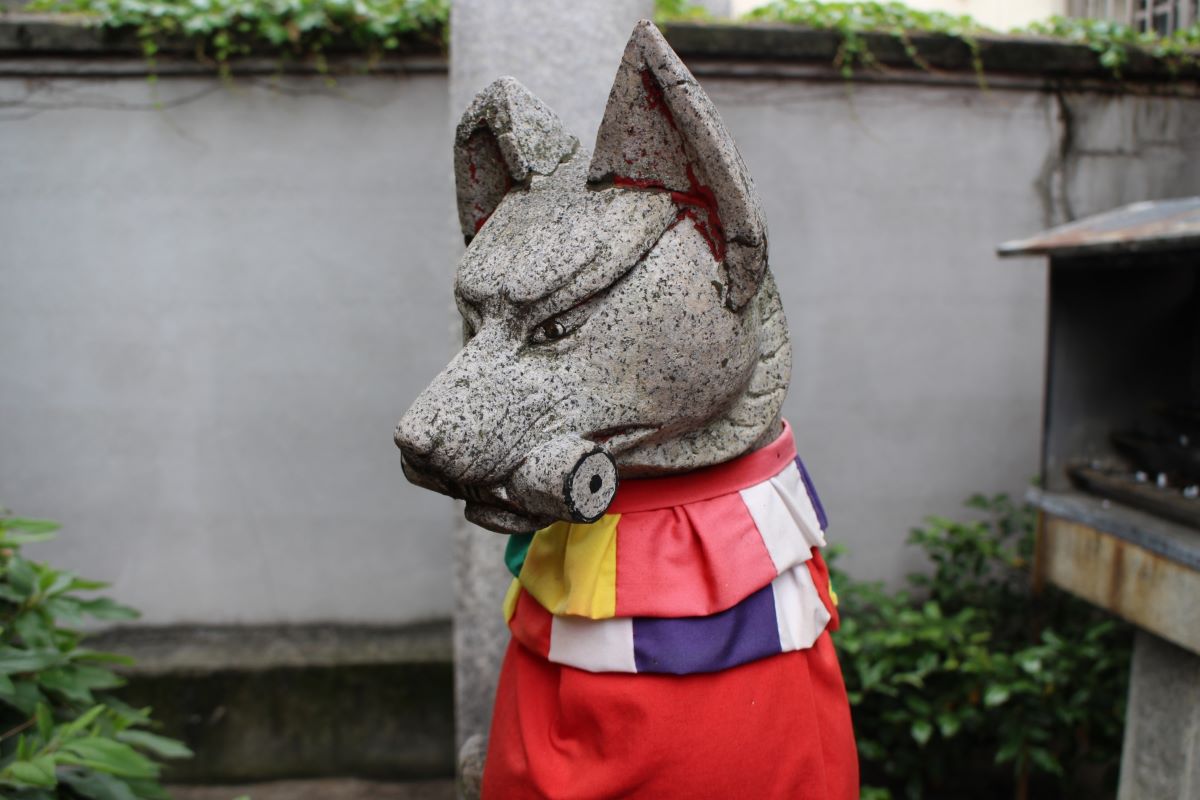
You can also pray for longevity with the water of longevity at the sacred crane well next to the main shrine. It is wee worth a visit to the shrine when sightseeing in Hakata ward.
Fukuoka Gokoku Shrine
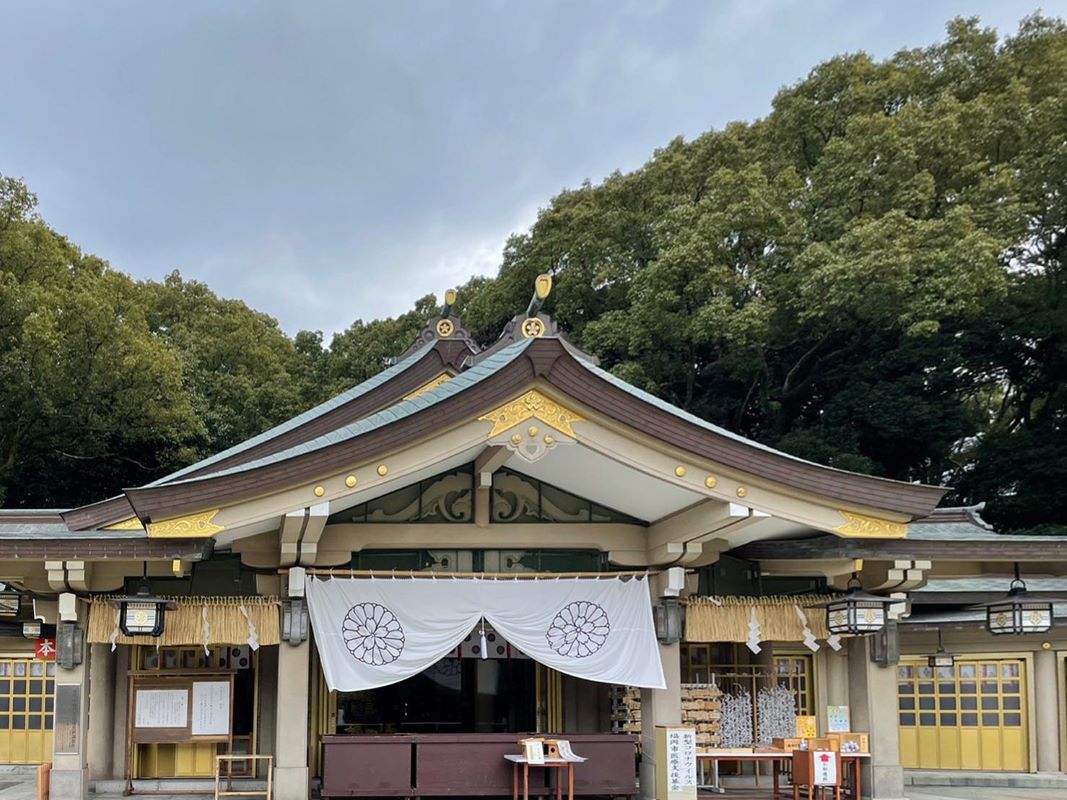
Every year from August 13 to 16, Mitama Matsuri is held at Gokoku Shrine. Various performances are held on the stage in front of the main shrine building, including elegant miko (shrine maiden) dances and performances on Japanese musical instruments.
One thing to look forward to is the stalls on the shrine grounds. Usually, stalls in shrines are set up by specialists, but at the Mitamatsuri, famous stores from Fukuoka set up stalls. In the evening, the lanterns are lit and it is very beautiful.
The shrine is between Ohori Park to Ropponmatsu Station. It is a shrine in the town, but it is a lush green place.
Canal City Hakata
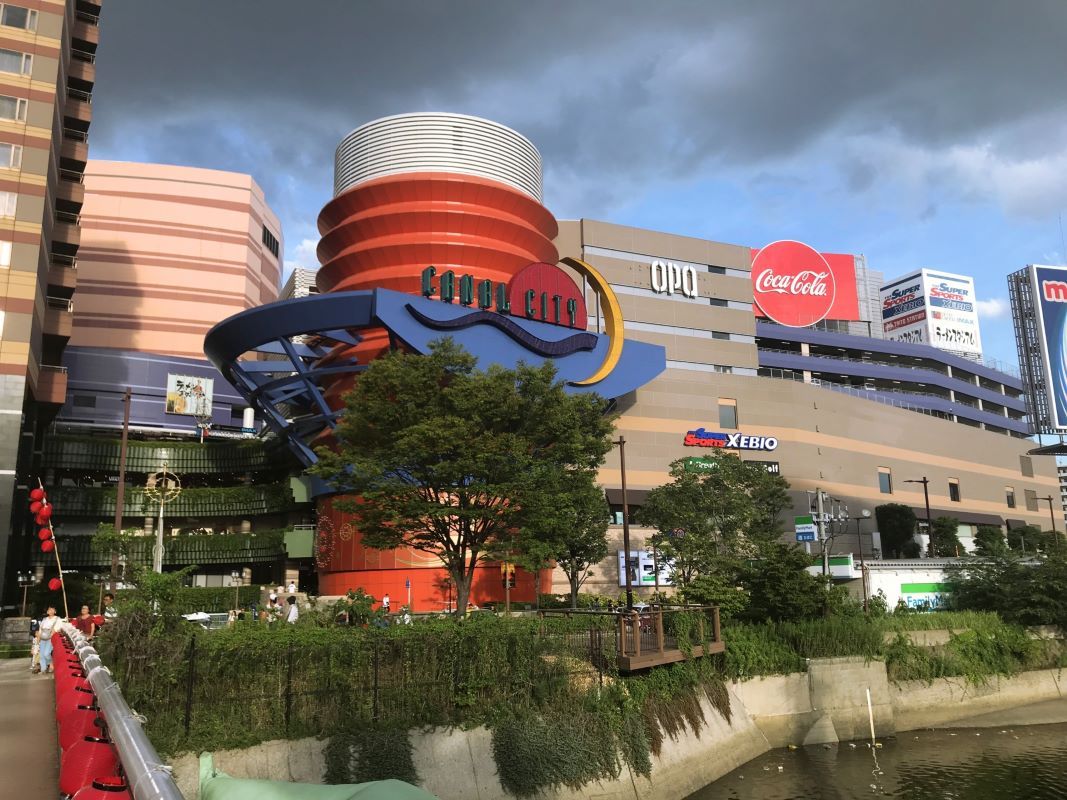
Canal City Hakata offers a wide variety of shopping and amusement attractions in a vast facility punctuated by a wonderful canal and fountain in the center of the complex.
The canal, which runs north-south, is the center of the plaza, fountains, and decorations, and events are held almost every day on the central stage.
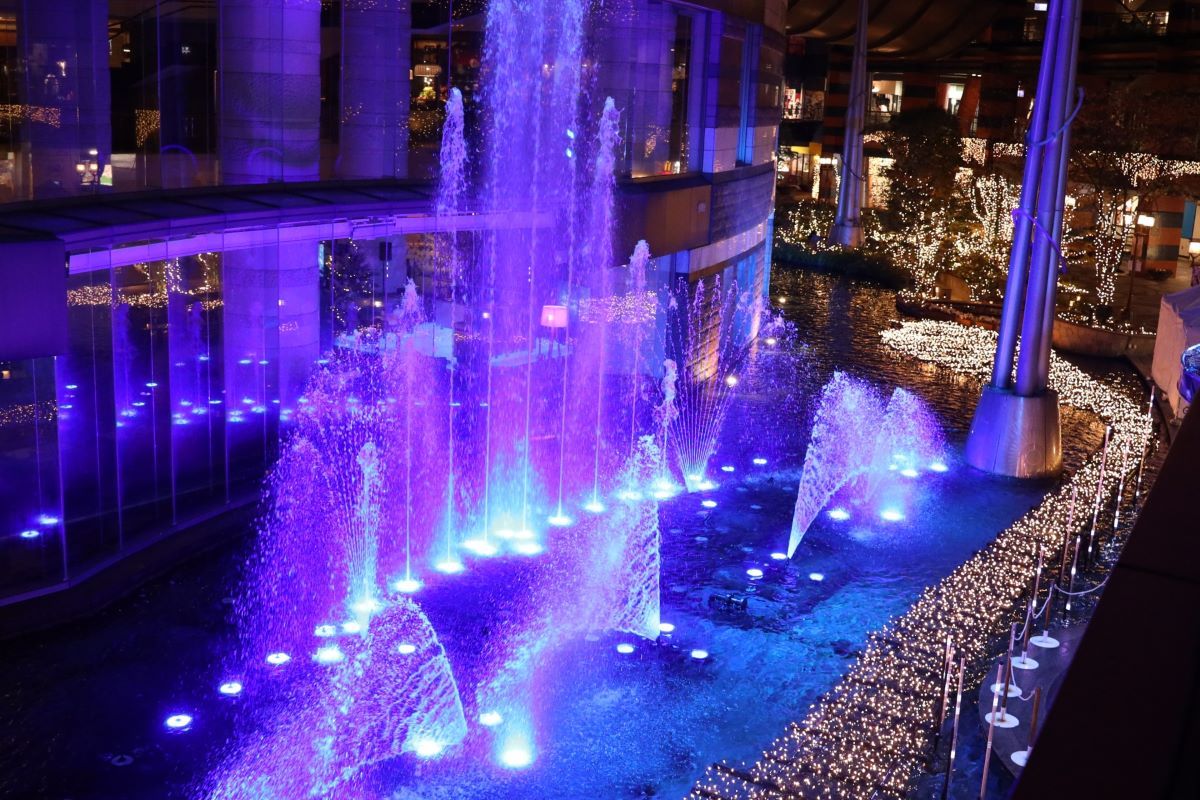
The expansive and unusual shopping complex is a vibrant entertainment space with specialty stores, movie theaters, hotels, and other facilities that satisfy all your needs for food, fashion, and fun.
Pro Tip: If you are hungry, head up to the Ramen Stadium on level 5 for some delicious ramen. It’s a great place to sample the Hakata ramen and the Nagahama ramen. Which do you like the best?
Hours
Store: 10:00 – 21:00
Restaurants: 11:00 – 23:00
By Subway
From Nakasu Kawabata Station of Fukuoka Subway Airport Line, 10 min. on foot through Kawabata Shopping Street or About 7 minutes walk from Gion Station.
Marinoa City Fukuoka
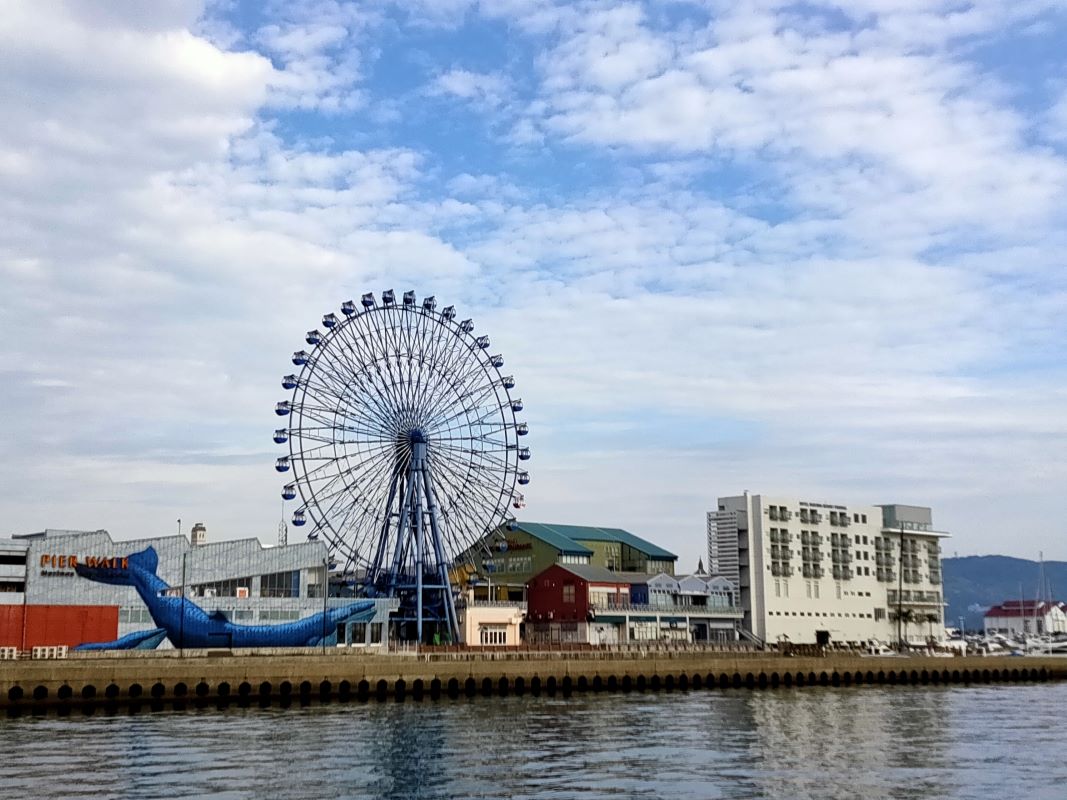
One of the largest outlet malls in Kyushu, located 30 minutes from the center of Fukuoka. Located facing the sea, the mall features outlet shops of various popular brands, large sports and furniture stores, and a food court.
The “Sky Wheel,” a Ferris wheel with a view of the ocean, also offers nighttime illumination.
Tochoji Temple
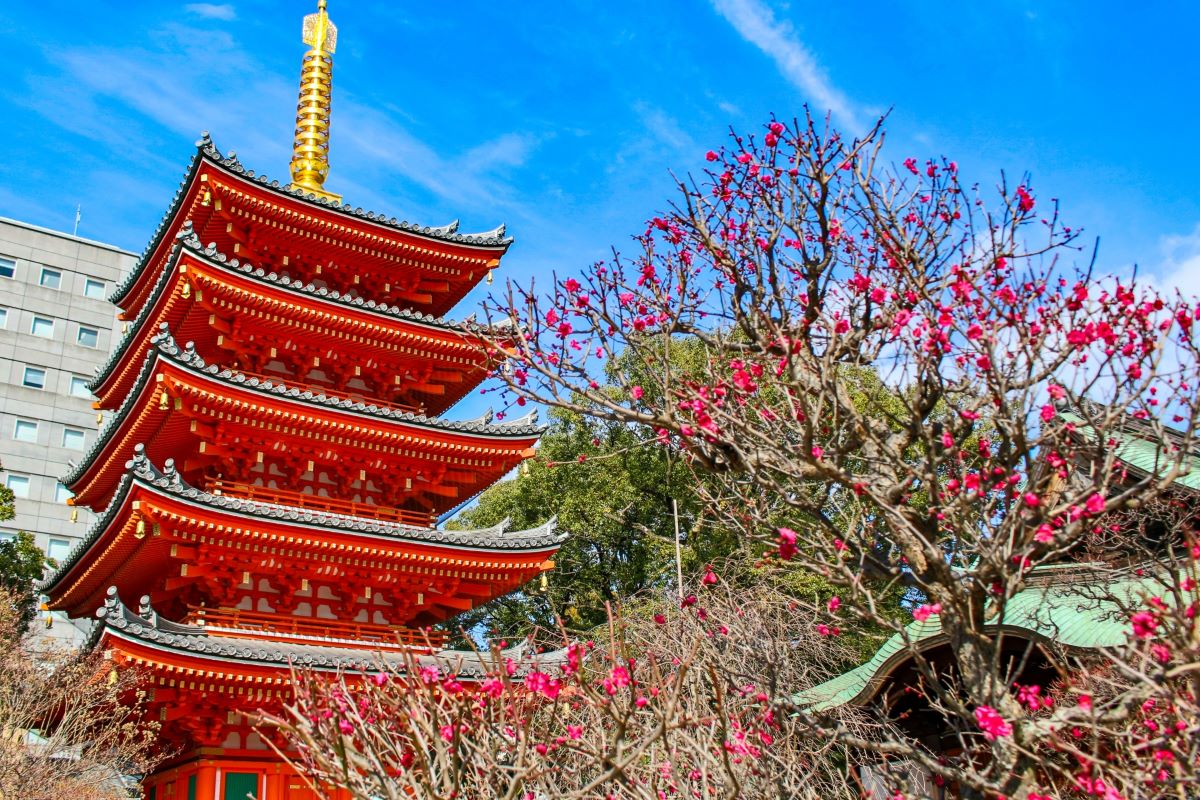
Tochoji Temple, the oldest temple in Japan, was founded by Kobo Daishi Kukai, and the Daibutsuden (Great Buddha Hall) on the second-floor
houses one of the largest Buddha statues in Japan.
The halo behind the statue is a spectacular 16.1-meter-high sculpture of seven Buddhas and thirteen other Buddhas.

The Daibutsu Festival is held on the first day of every month at 14:00. The large cherry tree by the temple gate is a popular hanami (cherry blossom viewing) spot.
Access: 10-minute walk from Hakata Station
Tenjin Underground Shopping Center
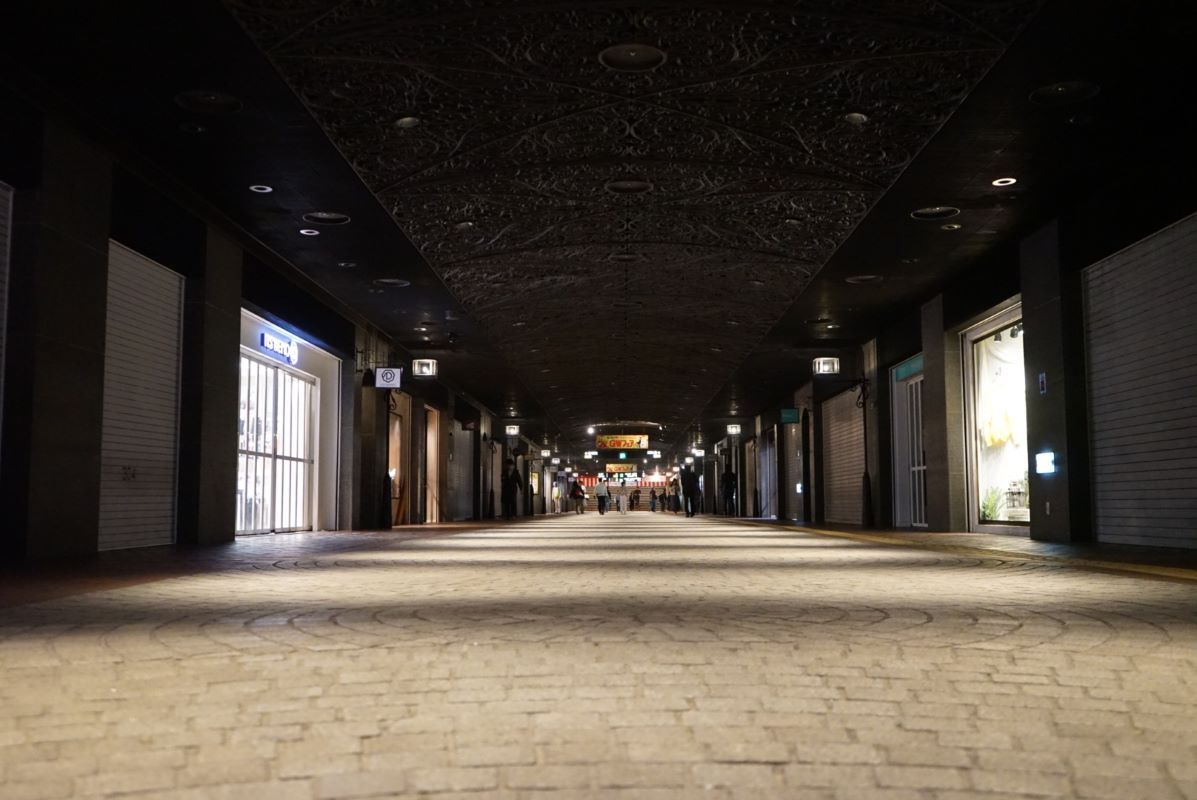
The Tenjin Underground Mall is a 590-meter-long underground shopping mall in Chuo ward that stretches beneath Tenjin, Fukuoka’s downtown area.
The underground shopping mall is divided into sections from No. 1 to No. 12, where you can enjoy shopping for fashion, gourmet foods, and sundries.
Hakozaki Shrine
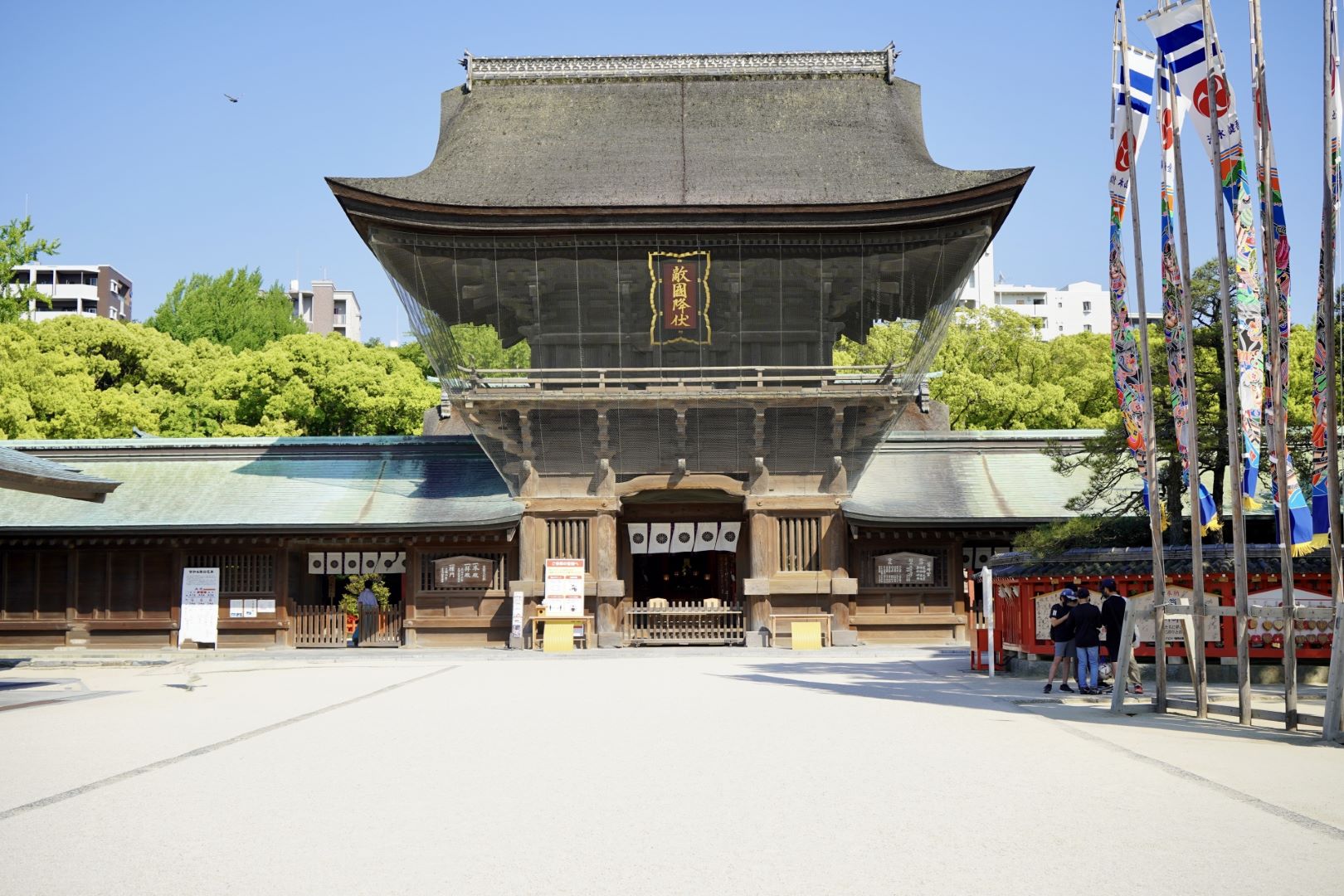
Hakozaki Shrine is one of the three major Hachimangu shrines in Japan. Known as the God of Victory, there are many so-called power spots within the grounds of the shrine grounds.
There are many Shinto rituals and festivals throughout the year, such as Tama Seseri and Hojo-e, one of the three major festivals in Hakata.
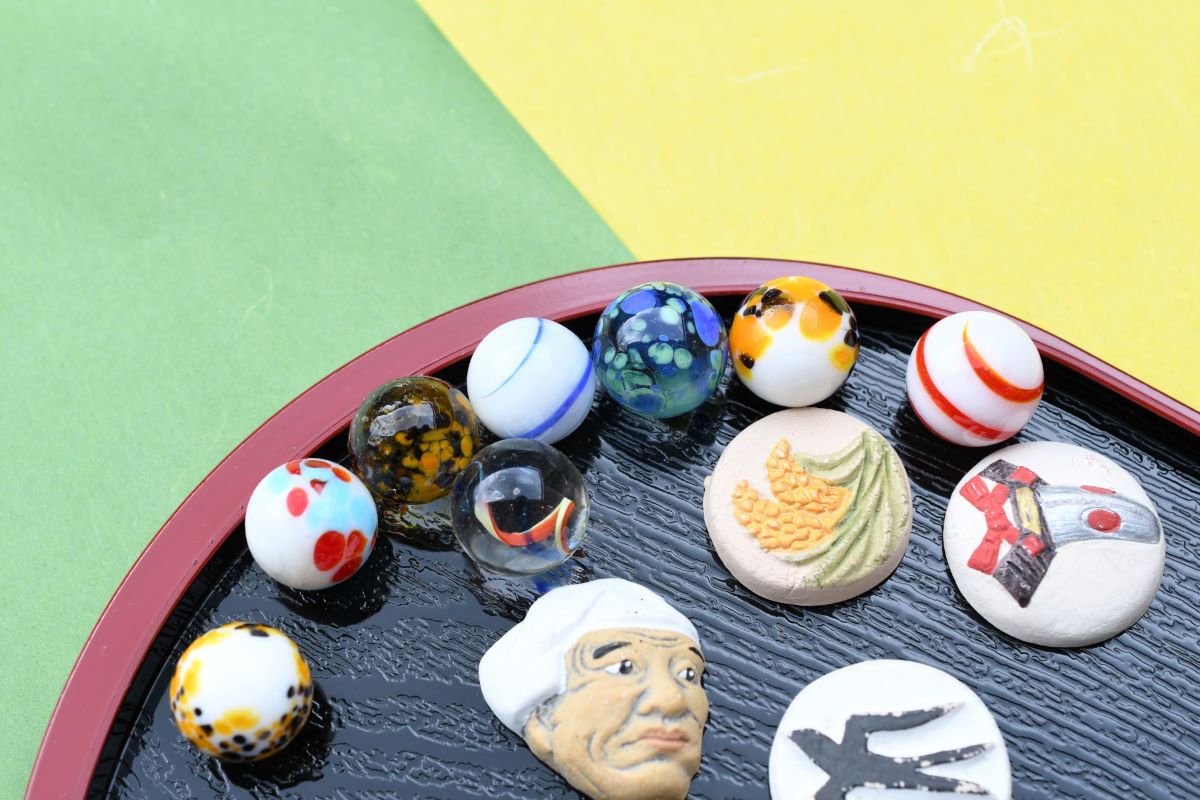
Hakata Champon and “Hakata O-Hajiki” are also famous as lucky charms unique to Hakozaki Shrine.
Fukuoka City Museum
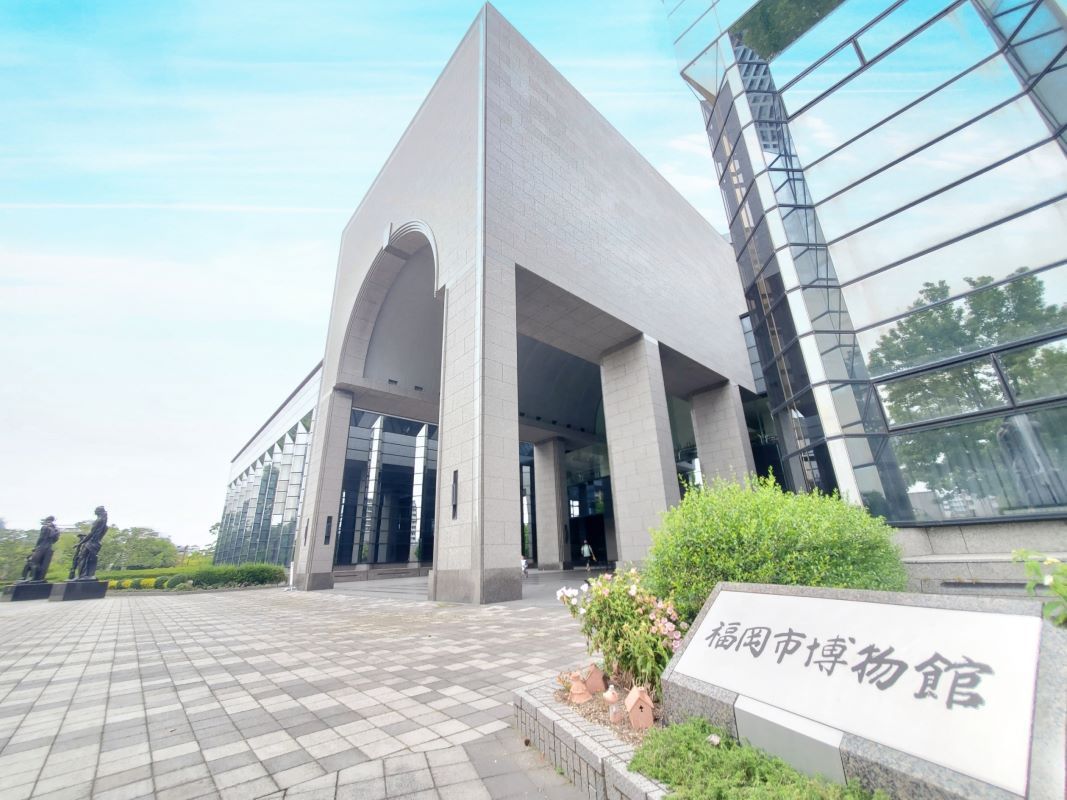
Fukuoka Museum is located in Momochihama, Sagara-ku and is just a stone’s throw from Fukuoka Tower and Momochi beach so it makes sense to check out all three places at once.
The museum is divided into three sections: permanent exhibits, special exhibits, and special exhibits, each with a different theme. Especially worth seeing are the permanent exhibits.
The history of Fukuoka is explained in detail from the Paleolithic Age to the present day, and you will be overwhelmed by the volume and detail, which is more than you can imagine.
The gold seal on display, which is a national treasure, is permanently exhibited at the Fukuoka Museum. The brilliance and historical significance of the gold seal is a big drawcard of the museum.
Fukuoka Asian Art Museum
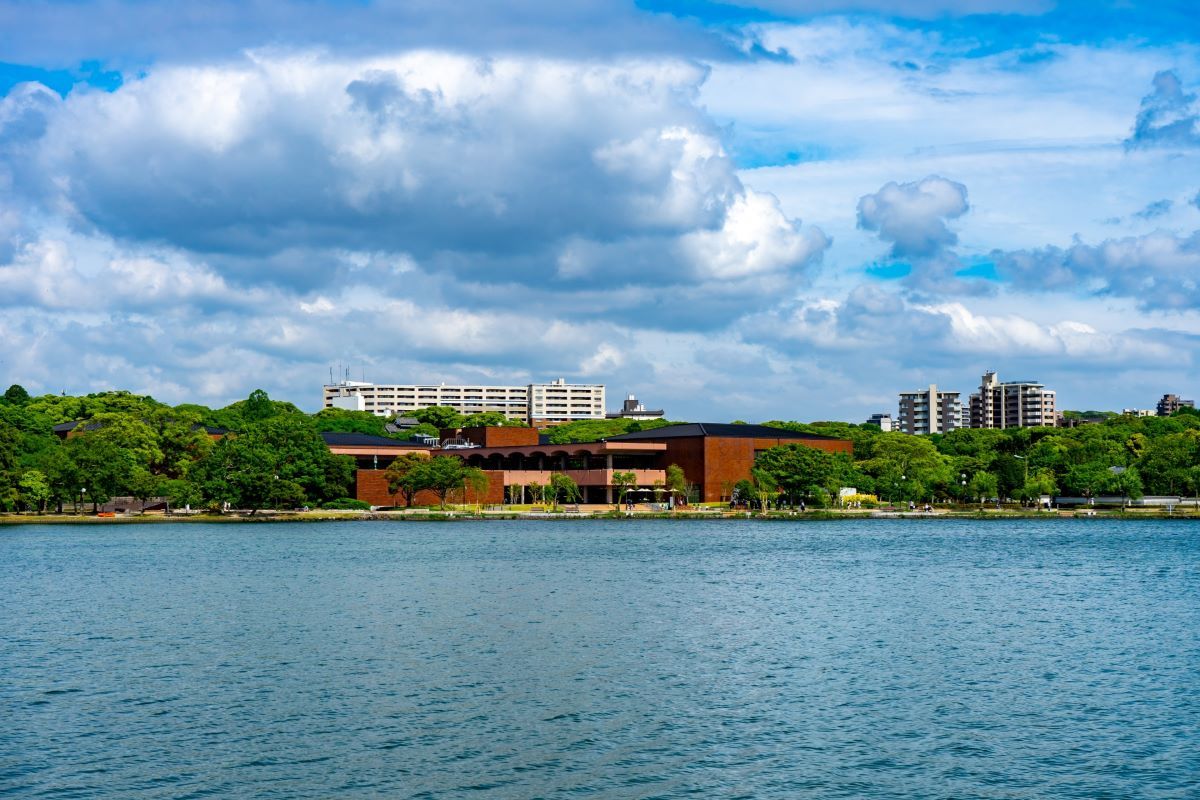
The Fukuoka Asian Art Museum is an interactive art museum exhibiting modern and contemporary Asian works and has a great location next to the pond in the popular Ohori Koen.
This fascinating gallery specializes in the collection and exhibition of modern and contemporary artworks from 22 Asian countries and has an impressive 2,700 works on display.
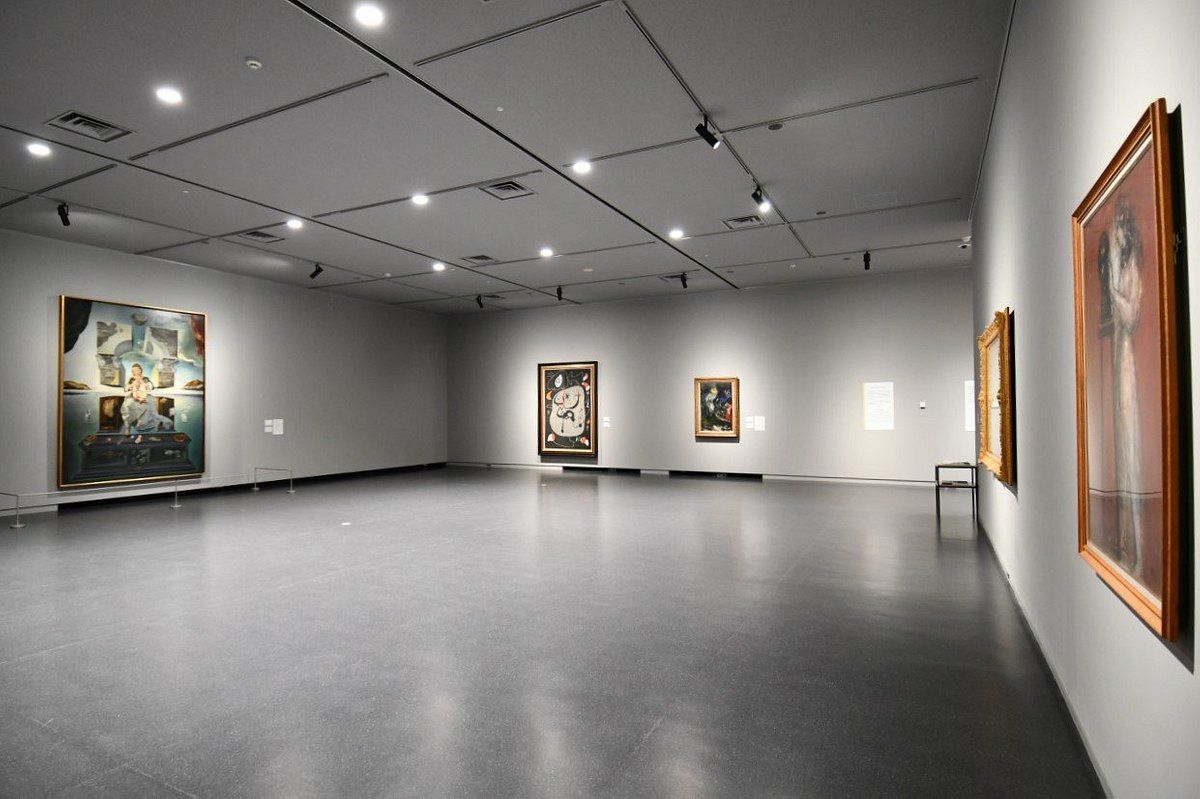
The museum also invites Asian artists to participate in collaborative productions and workshops, making it a popular venue for cultural exchange between Japan and other Asian countries.
Gallery hours: 9:30 – 18:00
Dazaifu
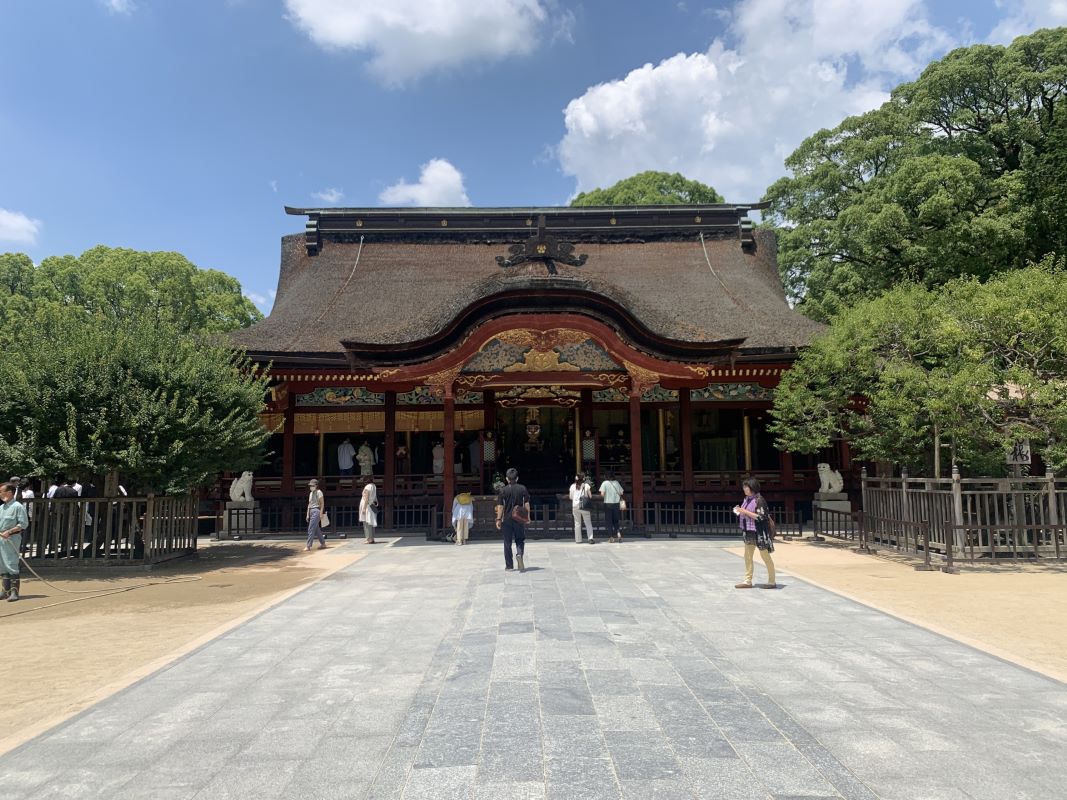
During your trip to Fukuoka, it’s with making a trip to Dazaifu.
Dazaifu Tenmangu Shrine is one of the most popular sightseeing spots in Fukuoka and many Japanese visit this spot to pray.
Dazaifu Tenmangu Shrine, along with Kitano Tenmangu Shrine in Kyoto, is the head shrine of all Tenmangu shrines in Japan, and is dedicated to Sugawara no Michizane, the famous god of learning.
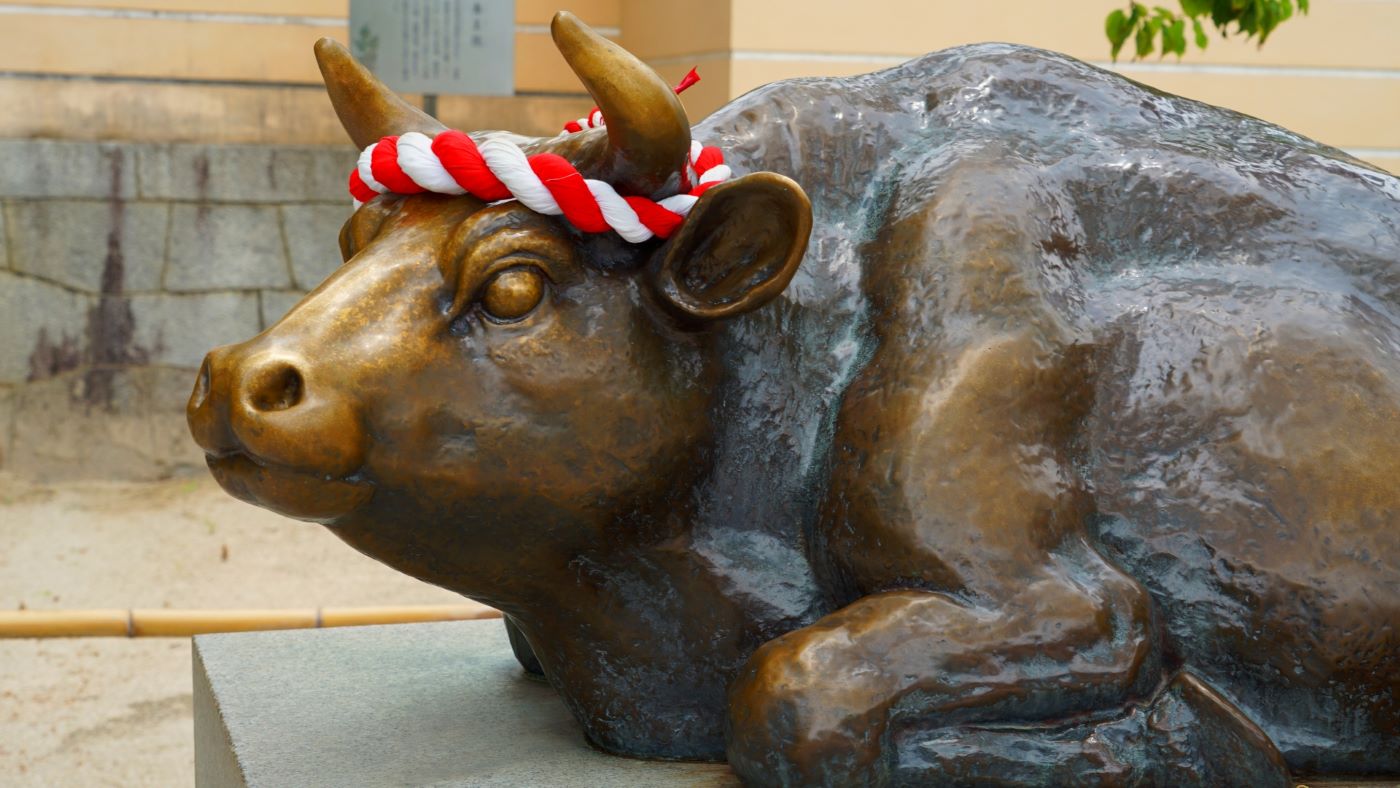
Within the precincts of the shrine, there are many historical points of interest, such as Josuisha, where Kanpei Kuroda spent the last years of his life, and the statue of Kirin, which was donated by a merchant at the end of the Edo period.
There are many places where you can feel the history and culture in the area and it’s worth taking some time to walk the streets and explore further.
At the rear of the temple complex, there is a small modern building that is actually a huge escalator that you can take up the fantastic Kyshyu National Museum
Kyushu National Museum
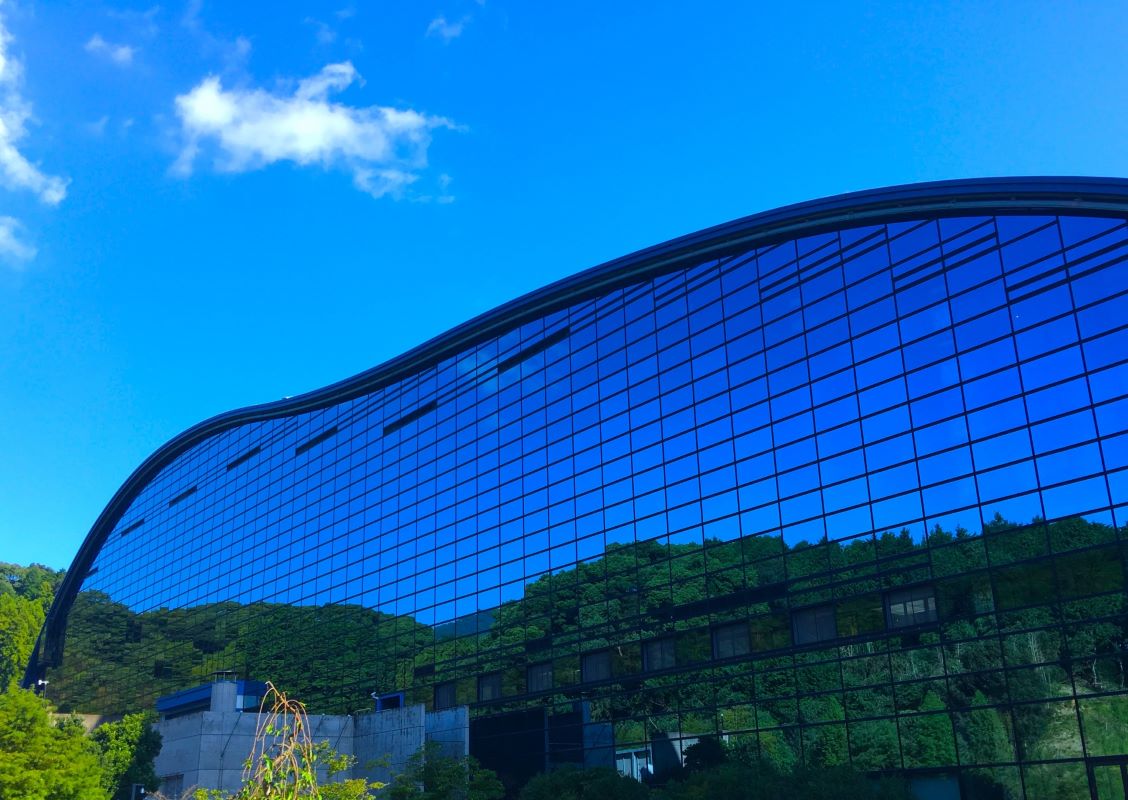
Kyushu National Museum is the fourth national museum after Tokyo, Kyoto, and Nara.
Based on the concept of understanding the formation of Japanese culture from an Asian historical perspective, visitors can learn about the formation of Japanese culture from the Paleolithic Period to the late Tokugawa Period.
In addition to the National Treasure “Shumo Shu Airenzu” by Masanobu Kano, many important cultural properties are on display, and special exhibitions are held from time to time Admission to the Asian cultural experience area “Ajipa” on the first floor is free.
The Cultural Exchange Exhibition Hall introduces the history of Japan from the Paleolithic Age to the end of the Early Modern Period (opening of Japan to the outside world)
The building itself is also spectacular, with glass walls all around reflecting the mountains and sky of Dazaifu.
Hours of operation
9:30 – 17:00 (admission until 30 minutes before closing)
Closed: Mondays
Admission:
- Adults 700 yen
- College students 350 yen
- High school students and younger free
Note That Special exhibitions are extra.
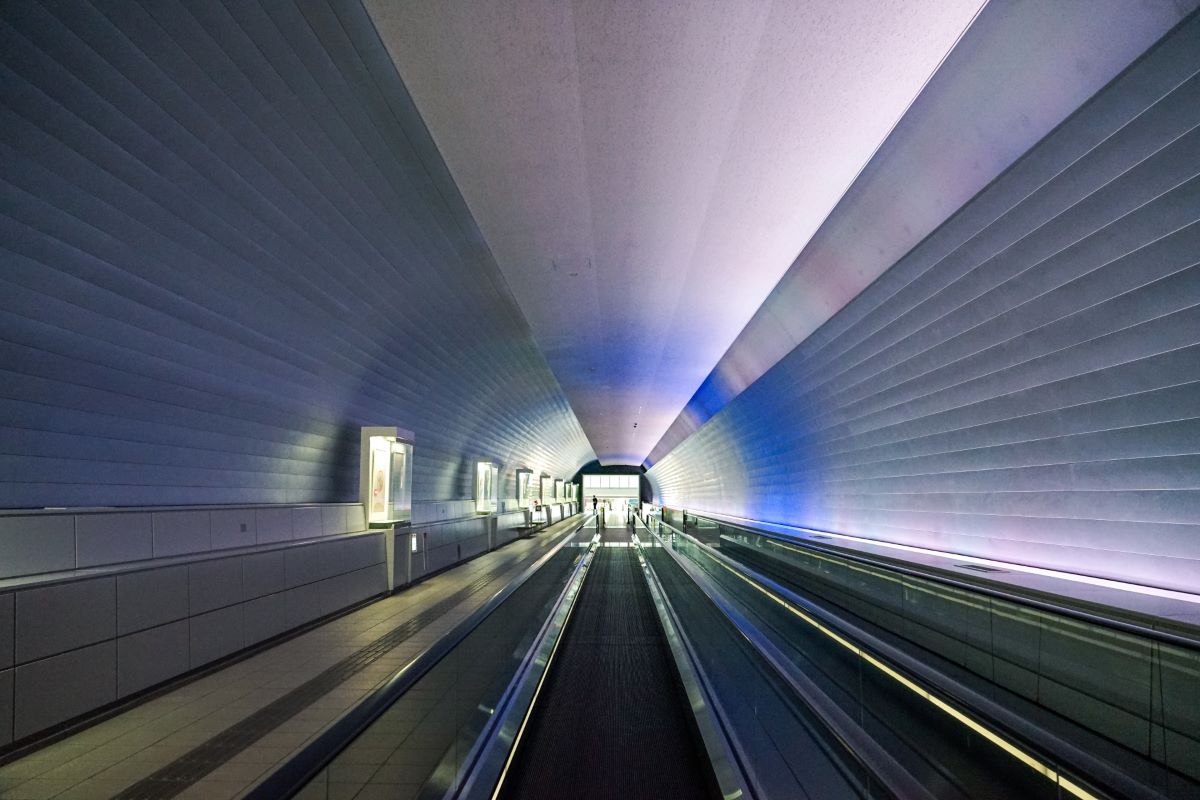
Access: A 10-minute walk from Dazaifu Station, the Kyushu National Museum is reached via the approach to Dazaifu Tenmangu Shrine and a moving walkway called the “Rainbow Tunnel.
What’s The Best Time To Visit Fukuoka

Hakata, the center of Fukuoka Prefecture, is located in Kyushu, southwestern Japan. It belongs to the Pacific climate zone and has a mild climate, but in winter, it is affected by the cold winds from the Sea of Japan and has severe cold days with snowfall.
In summer, it is susceptible to typhoons and often has rough weather. The best time to visit Hakata is in spring and fall. The weather is warm and pleasant, making it ideal for strolling and other activities.
More Facts Interesting Facts And Things To Do In Fukuoka
- Make sure to eat some delicious Hakata Ramen – The most famous tonkotsu ramen in Japan
- Fukuoka International Airport is known as the most convenient in Japan and just a 5 minutes subway ride from Central Fukuoka
- The Fukuoka City Science Museum is a fun place to take kids
- Free Wi Fi hotspots are available in all subway stations and many other places around central Fukuoka and beyond
- There are plenty of great parks in the city center to take a time out or have a picnic.

